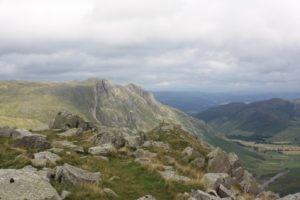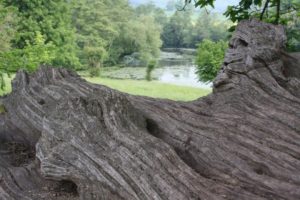05 January 2017
Wild behaviour
A voice crying in the wilderness
by J.R.Thomas
 There can be little that is more dangerous to the public wellbeing than when a new hip philosophy coincides with budgetary restraint. When those who normally call for more expenditure concur with those who are in perpetual attempts to draw closer the purse strings, we are all at risk. Those who recall the enthusiasm with which the psychiatric nursing technique of “care in the community ” was received by those in charge of the National Health Service budget will also remember that the new policy was invoked with extraordinary haste, with the former secure hospital homes of many patients closed, their bewildered inhabitants cast loose with pitifully little care into the equally bewildered and unsure community, and the walled hospitals sold off rapidly for redevelopment as offices and housing. That is not to say that the new treatments were wrong or that many of those taken from closed units were not better off carefully reintegrated into the wider world, but the potentials for savings on annual budgets and the joy of potential capital receipts did attract indecent haste and a lot of unfortunate lacunae in care.
There can be little that is more dangerous to the public wellbeing than when a new hip philosophy coincides with budgetary restraint. When those who normally call for more expenditure concur with those who are in perpetual attempts to draw closer the purse strings, we are all at risk. Those who recall the enthusiasm with which the psychiatric nursing technique of “care in the community ” was received by those in charge of the National Health Service budget will also remember that the new policy was invoked with extraordinary haste, with the former secure hospital homes of many patients closed, their bewildered inhabitants cast loose with pitifully little care into the equally bewildered and unsure community, and the walled hospitals sold off rapidly for redevelopment as offices and housing. That is not to say that the new treatments were wrong or that many of those taken from closed units were not better off carefully reintegrated into the wider world, but the potentials for savings on annual budgets and the joy of potential capital receipts did attract indecent haste and a lot of unfortunate lacunae in care.
The armed services have also found themselves recently in the same rapidly closing trap; a new philosophy of remote warfare enabled by the technology of computers and drones, and a consequent welcome reduction in putting service personnel at risk, was manna to over-extended budgets for the Ministry of Defence. But the Generals who had so enthusiastically espoused the new approach have found themselves literally without boots on the ground – a critical shortage of soldiers and lack of boots, to such an extent that squaddies have been reduced to buying their own.
And now here comes another instalment, another unfortunate jointure of a philosophy and a looming deficit. Luckily, it should not threaten lives, though it will certainly threaten many livelihoods; and if adopted it could take centuries to reverse.
Rewilding is the new conservationist watchword, that of removing human intervention in the management of the landscape. It is far from a new idea – the creation of the vast American National Parks was based on exactly the idea that there should be no human interference in the wildernesses of the American West (with a slight nod to the interests of local inhabitants and tourists by the elimination of most of the buffalo, wolves, and bears).
In Britain though, with a greater population density and a long history of human intervention for farming, forestry, and sport, there are very few parts of our landscape that can be truly regarded as unspoiled or “wild”. The ancient woodlands we so admire are the products of careful tree management and the ancient ways of the chase. The heather clad moors only stay that way because of careful grazing regimes and controlled burning to refresh the heather; even the Scottish west highlands are the result of man harvesting the forests, and then keeping the remote hills deforested, firstly for sheep grazing and now for deer. So what we love so much about the landscape of the British Isles is very man made and man maintained.

But now rewilding is becoming the buzzword, on both a micro and a macro scale. Abandon human intervention. Let areas of land revert to what they would be if we did not interfere. That way lies a true appreciation of nature – and a great deal of cost saving. Much of the British landscape is of course privately owned and managed (unlike the American National Parks, where the land mostly belongs to the state). But regulation of the British countryside – and the increasing amount of it owned by charities, in particular the National Trust and the Royal Society for the Protection of Birds (“RSPB”), carries cost, and both government and charities are finding maintaining standards difficult in a time of public austerity. In the fifteen UK National Parks, although privately owned, government has to run grant awarding and subsidy regimes to compensate owners for loss of income in not running their land as they otherwise would, or assisting with costs (of maintaining buildings, gates, walls and so forth) that they could otherwise ignore. The Treasury has told the National Park authorities it wants big cuts in their running costs – ten percent as a start – and, although the parks are generators of income from tourism, most of that goes to private service providers, not to the park authorities. That leaves the park managements with only one real route to balance the budget – cut costs.
So let the landscape go wild. Abandon those remote farms in the uplands, on the edge of moors, tucked into folds in the brooding hills. Let the gates rot and the walls fall down. Let the buildings become ruins. Make savings for the National Park authorities and even bigger ones potentially for central government who, post-Brexit, will have to repatriate hill farming subsidies from Brussels. Everybody wins. Well, not the farmers, but no doubt they will find some job working in a village café.
Private wilding is also taking off. Knepp Castle in Sussex has long been the landed estate of the Burrell family, but the economics were becoming a major challenge, even with over three thousand acres under management. Fifteen years ago farming in a formal sense was abandoned and the place was turned into an English nature reserve, with minimal interference, letting the landscape revert to what Sussex might have looked like a thousand years ago. Roaming Longhorn cattle and Tamworth pigs provide some income from organic meat, as does venison from wild deer, and the public can take guided tours across the estate. Huge costs savings for the Burrell’s and a win for the natural environment.

A similar scheme is underway around Yoxford in Suffolk, masterminded by Jon Hunt, founder of Foxton’s, the estate agency, where fences and hedges are being removed and the income in future will come not from farm rents but from letting luxuriously refurbished houses on the estate to holiday makers. In the Scottish west highlands though, wilding is in some people’s view – especially local people – going too far. Paul Lister, whose money comes from MFI, the flatpack furniture business, owns very large landholdings which he is wilding. Taking his model as medieval Scotland, he would like to reintroduce wolves. He has pursued this with great singlemindedness and it seems not impossible that he will succeed, at least with a trial project.
Which brings us to the rather odd crux of this debate. What is actually wild? To those who have to maintain landscape, directly or indirectly, it can mean not doing things (handily saving costs). To many conservationists it means intervention, but in favour of objectives different from commercial ones. The RSPB wants things wilder – farming, country sports, and birds do not mix well. But it, and its members, and indeed the public, seem to have a particular enthusiasm for birds of prey, although there is much evidence that the decline in the songbird population is directly linked to the growth in the population of birds that eat them – those birds of prey. So the RSPB policy of letting things go wild means so long as this is good for big bird-eating birds.
So, it seems fierce birds yes, big bad wolves no. Beavers, made so lovable by Disney cartoons, are also on their way back. They are somewhat shy and like the their surroundings wild – popular generally with the public, but not so much with river fishermen, many of whom are involved with wilding of their own – of rivers so that they will produce more fish (and fishing). The beavers are all in favour of that, but the fishermen are not keen on the beavers – they would like the reintroduction programme stopped.
Our landscape is likely to become an increasing source of political conflict, and that will be especially intense where the activities carried on there need support from the public purse. Which probably means the most threatened native creature in the remote places is likely to be – the human being.
If you enjoyed this article please share it using the buttons above.
Please click here if you would like a weekly email on publication of the ShawSheet

